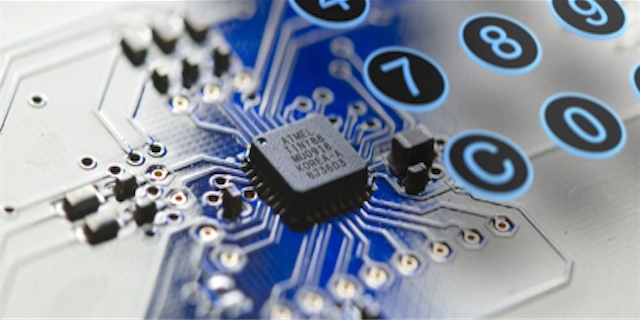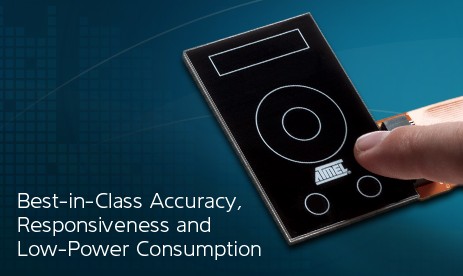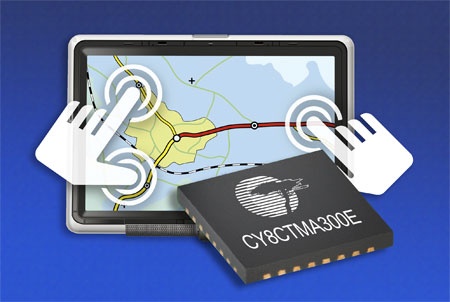Touch technology has penetrated into various application fields, and the market has put forward higher requirements. Currently, touch ICs are developing in the direction of high accuracy, low noise, high precision, fast response, and low power consumption. In the long run, the diversity of touch screens and the variety of touch modes are manufacturers' efforts to develop touch technology. Follow the goal.
High performance challenges: accuracy, noise and power consumption
With the launch of the iPhone as the time node, people have officially realized that the human-computer interaction innovation brought by touch technology has become "touch everywhere", and it has been four years since the blink of an eye. During this time, in addition to the transition from resistive touch to capacitive touch, from single-touch to multi-touch, touch technology has undergone a series of developments, such as higher precision and Fast response speed, etc. In addition, the touchscreen architecture is also upgraded from cascading technology to on-cell and in-cell.

Since the main function of touch technology is to enhance the user experience by simplifying human-computer interaction, the demand for the application market is the main foundation for the development of related technologies for touch IC manufacturers. The technology research and development of this type of manufacturer is mainly divided into two steps: first use high-performance touch technology to meet the basic needs of the market, and then use innovative technology to lead the new application boom. High performance challenges: accuracy, noise and power consumption
The traditional button-type touch is relatively "thick line", as long as the button behavior is quickly feedbacked, and as the touch technology develops toward multi-touch and screen touch, the touch application has high accuracy and high technology. Performance, accuracy, low noise, fast response time, and low power consumption all place higher demands. For example, whether it can correctly reflect the operation of each finger in multi-touch, whether the touch screen can work normally in a damp environment, etc., has become an important indicator for users to measure touch screen technology.
Atmel's maXTouch technology boosts touch accuracy
In terms of improving the accuracy of touch, Binay Bajaj, director of touch product marketing at Atmel, believes that accurately tracking multiple inputs is a major design challenge. In this regard, Atmel's maXTouch technology uses mutual capacitance technology. “The mutual capacitance technique places the transmit and receive electrodes in an orthogonal matrix—this is actually a miniature touch screen array. Since the capacitive coupling of each point in the matrix can be determined separately, there is no ambiguity in the multi-touch report coordinates. Therefore, it has higher accuracy and can bring a better user experience." Touch expert Cypress touch technology uses differential signals from synchronous analysis of self-capacitance and mutual capacitance sensors to solve The issue of touch accuracy. “Under the real application environment, the grasp of touch accuracy is more challenging. For example, when using the touch screen in the case of rain or wet hands, it will bring the problem of false response, low precision and even failure. The system relies on the capacitor alone. Sensors can't distinguish between finger touch and water drop 'touch'. Synchronizing the differential signals from self-capacitance and mutual capacitance sensors is a good solution,†said Cypress Marketing Director John Carey.

Cypress Introduces Technology for Micro Touch Applications
In terms of touch accuracy, Cypress has introduced technology for fine touch applications. According to reports, the traditional capacitive pen simulates the size and conductivity of the finger, which makes it difficult to achieve the precision and sensitivity required by the user when dealing with special tasks such as writing and painting. Cypress now supports 1mm tip-on touch for a true handwriting performance experience. The company's TrueTouch family of products offers a fast refresh rate that guarantees a handwriting experience on the touch screen similar to the handwriting experience on paper. “This also benefits from our unique single-chip solution that supports both self-capacitance and mutual capacitance,†says Carey.

Noise is another big problem facing touch technology. “Especially in a variety of topologies such as cascading, plug-in, and embedded, the noise brought by the display brings a big impact on the touch performance,†Carey pointed out. Cypress currently uses embedded technology to neutralize noise and has developed a unique patented single-chip solution that is easily integrated into touchscreen systems. Bajaj also pointed out that touch technology must be able to reduce noise including LCD screen noise, charger noise, and ambient noise (noise from WiFi networks and microwave ovens). "Atmel's new maXTouch E-Series Capacitive Touch Engine (CTE) solves this problem with intelligent hardware filtering, ensuring that even large noise spikes do not affect touch performance."
Hidden Speakers,In Wall Speakers,Silk Diaphragm Tweeter,Carbon Fiber Cone Woofer
The ASI Audio Technology Co., Ltd , https://www.asi-sound.com